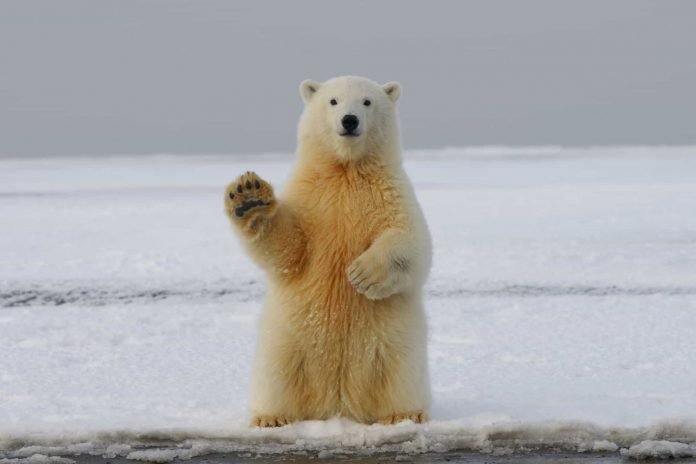
Imagine a pyramid. The pyramid is quite similar to a food chain. Now imagine being at the apex of the pyramid. Obviously only a pharaoh could be there, right? It’s the same in the food chain. The animals at the apex of the food pyramid are the ones that have dominant control over the food chain in its ecosystem.
Often referred to as an apex or alpha predators, animals that have no natural predators and those who usually prey on their own to survive in the wild are the ones that stay at the top of the food chain or pyramid.
Below is a list of 18 animals without natural predators that dominate positions at the apex of the food pyramid either underwater or on land or both.
Lion

A lion is an Alpha Predator who has no natural predators since it is on top of the food chain. These ruthless animals can hunt and kill almost every animal in the Jungle. They usually feed on medium-sized animals like wildebeests, zebras, giraffe and antelope.
Lions have a huge well-muscled body, weighing 350-420 lbs, with a large head and their mane gives them a majestic look. Their short coat is found in different colours like buff-yellow, orange-brown, and silvery grey to dark brown. Colourful, you say!
Except for the tropical rainforests and deserts, the lions can live in most habitats, but they prefer grasslands, open scrub, savanna and open woodland, where they can easily find food.
A Lion when in the wild lives for 10-14 years, which is their maximum age span since they are not hunted by other animals.
Tiger

Tiger, the largest Carnivore in the ecosystem, sits on top of the food chain, except human beings; they don’t have any natural predators, and they control the population of natural prey including deer, pig, cow, horse, buffalo and goat.
The tigers have a well proportioned muscular body with strong and powerful forelimbs, a large head and a long tail. In general, a healthy Tiger weighs around 650 pounds and their base coat is found in three main colours – standard orange, white and golden, with black or cinnamon stripes.
Rainforests, grasslands, mangrove swamps, rocky areas and grasslands are some of the diverse habitats where Tigers live; they usually look for places close to the water and equip with vegetation for ease of hunting.
A tiger lives for a period of 10-15 years in the wild.
Snow Leopard
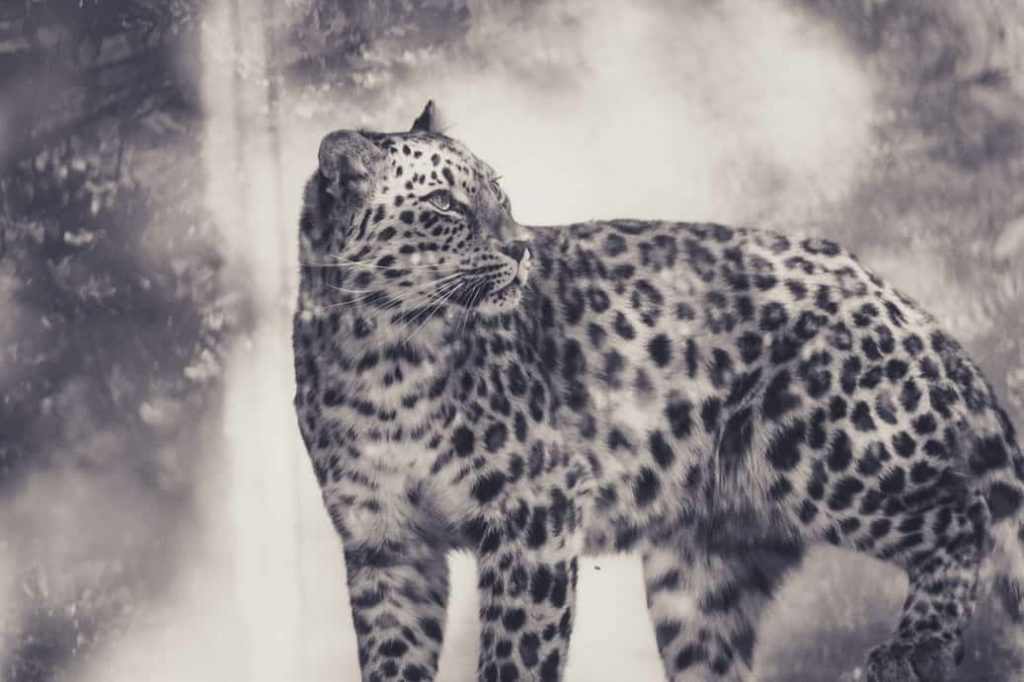
The Snow Leopards maintain a balance in the ecosystem by preying on overpopulated natural prey like marmots. Hence they are on top of the food chain with no natural predators except humans who are their sole predators.
They can kill animals who are three times heavier than them, and they usually feed on blue sheep, argali, deer, horse and camel. Snow Leopards are adapted to live in cold and high elevation places where they inhabit large areas. These majestic yet mesmerising animals can be spotted in northern and central Asia’s high mountains.
Their grey and white fur with spots on the head resembles snow and rocks in their environment. Snow leopards come with muscular, stocky limbs with short legs, donning a thin yet fur-laden long tail. They weigh around 55-165 lbs, and their average lifespan is 10-12 years.
Jaguar

The largest cat species in the New World, Jaguar is amongst the apex predators who play a significant role in stabilising ecosystems, and they are not preyed upon by other animals in the wild.
They have the freedom to prey on any animal, but they usually feed on deer, tortoises, iguanas, armadillos, fish, birds and monkeys. Jaguars generally avoid open forests and grasslands, which is why they inhabit tropical forests, lowland river valleys, swamps and coastal mangroves.
Jaguars have a compact and stocky body, with a broad head and strong jaws. They weigh about 123-212 lbs. Their coat colour is available in different colours like tawny yellow, reddish-brown, black, and white with spots which serve as good camouflage to them. In the wild a Jaguar has a lifespan of 12-15 years.
Cougar

Cougars are also apex predators, and although they don’t really have any natural enemies, they sometimes compete with other predators like bears and wolves for food. They usually prey on deer, bighorn sheep, elk, rabbits, hare, wild pigs. They also feed on small animals like bobcats, beavers, raccoons and skunks.
Cougars have high adaptability, and they can live in a wide variety of habitats including grasslands, dry brush country, coastal swamps, rocky cliffs and mountain ranges; they prefer places with adequate cover and prey.
After Jaguar, Cougars are the second largest cat in the New World with a round-shaped head accompanied by erect ears. The powerful jaws help them to grasp and hold large prey easily. Their muzzle and chest are white, their coat colour varies from great to reddish-tan, and they have a long tail which is about 1m long.
A healthy Cougar weighs around 100-220 lbs, and their average lifespan is 8-13 years.
Gray Wolf
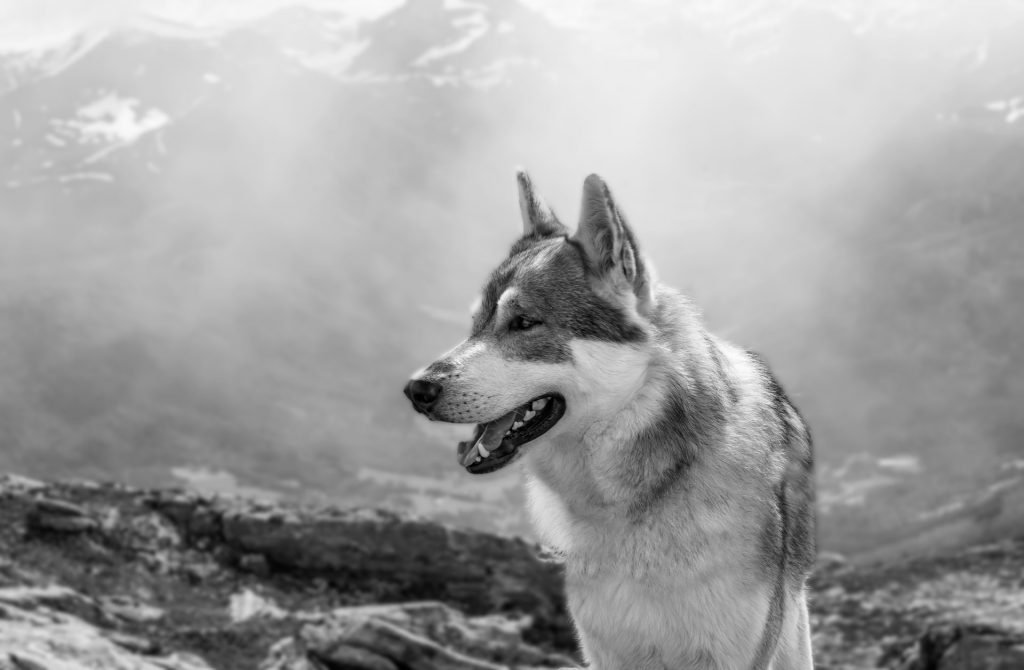
The Gray Wolves play a significant role in a healthy, thriving ecosystem. They prey on a variety of animals from deer, elk, bison, moose, to small animals like beavers, rodents and hares.
Gray Wolves look similar to a large German Shepherd (but you don’t want to pet them., for sure) with large canine teeth, and powerful jaws. They have thick fur coats with a long bushy tail which is often black-tipped, and they weigh about 70-145 lbs on an average.
They are one of the most wide-ranging land animals, occupying a huge variety of habitats including arctic tundra, woodlands, prairie and arid landscapes. In the wild, their average lifespan is 6-8 years.
Dhole

Dhole is also regarded as apex predators because they are possibly only preyed by tigers and humans. They prey on a huge variety of animals including deer, wild pig, buffalo, wild sheep, wild goat and reindeer. Dhole can also feed on berries, bugs, lizards and rabbits.
They look like a German Shepherd; they have a long bushy tail, rounded ears and long legs. An adult dhole weighs 32-44lbs on average. They are found in different colours like charcoal grey, rust red, and sandy beige depending on their habitat. Just like dogs, Dhole’s are good at adapting their surroundings, and they inhabit dense forests, scrub, steppes and alpine regions.
The average lifespan of a Dhole in the wild is 10-13 years whereas in captivity it is 16 years.
Polar Bear
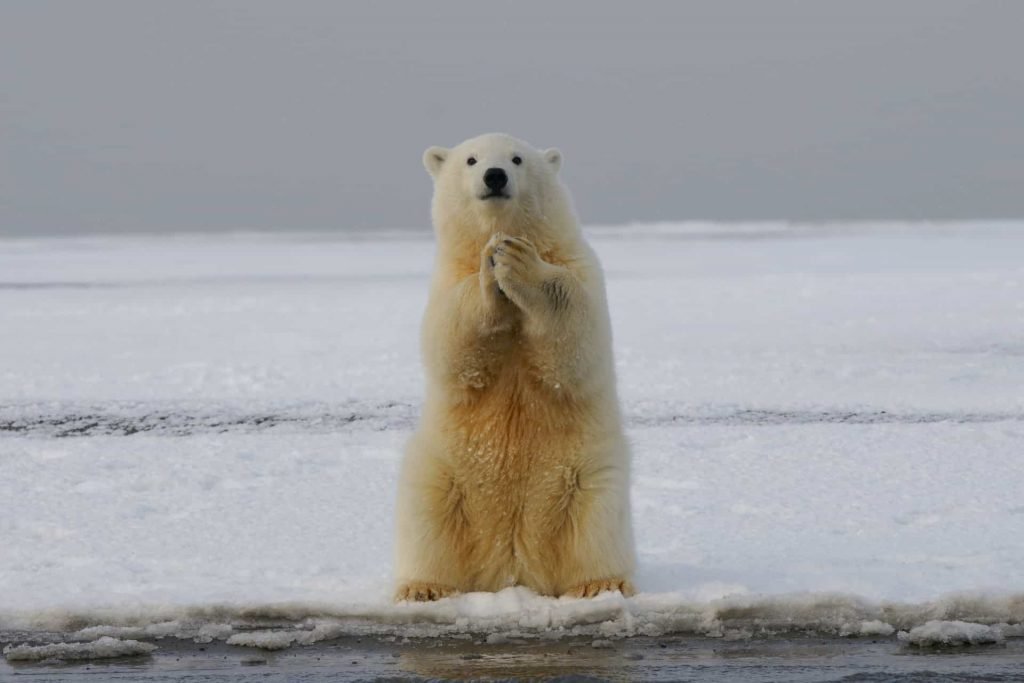
Polar Bears have a thick and dense insulating fur coat, the hairs are transparent, but they reflect light and appear white-coloured. Some great general knowledge, right?
They have a very long skull with a long nose, and their short and stocky legs help them to walk on land and swim in the water. An adult bear weighs about 772-1433 lbs in general with an average lifespan of 20-25 years.
As it is of common knowledge, Polar Bears have adapted to the extreme climatic conditions of the Arctic and the surrounding region. Their physical characteristics have allowed them to live in places with low temperature and cold water.
With their strong paws and heavy claws, they can easily navigate on thick sheets of ice. They feed on harp, hooded seal, and scavenge on walruses, narwhals and bowhead whales. Polar Bears are apex predators they feed on a variety of animals, and they don’t have natural predators to prey upon.
Grizzly Bear

The Grizzly Bears are highly intelligent animals with an excellent memory and strength. They are known to be good swimmers and fast runners who can reach a speed of 35 mph over land. Grizzlies feed mostly berries, small mammals, and of course their favourite…fish!
They also prey on hoofed animals and enjoy carrion. Grizzly Bears have a brownish fur with a pale or silvery tip which gives them a ‘grizzly’ appearance. A humped shoulder and Wolverine-like claws (just kidding) distinguish Grizzly Bears from the others of their species.
They are massive animals with an 8 feet long body and weigh about 900 lbs and have a life expectancy of 25 years.
Grizzly Bears inhabit a wide variety of ranges and places like valleys, mountains, dense forests, near rivers and coastal areas with plenty of food and water availability. Reiterating, they are alpha predators, and they feed on other animals and plants, maintaining balance in their respective ecosystem.
Bald Eagle
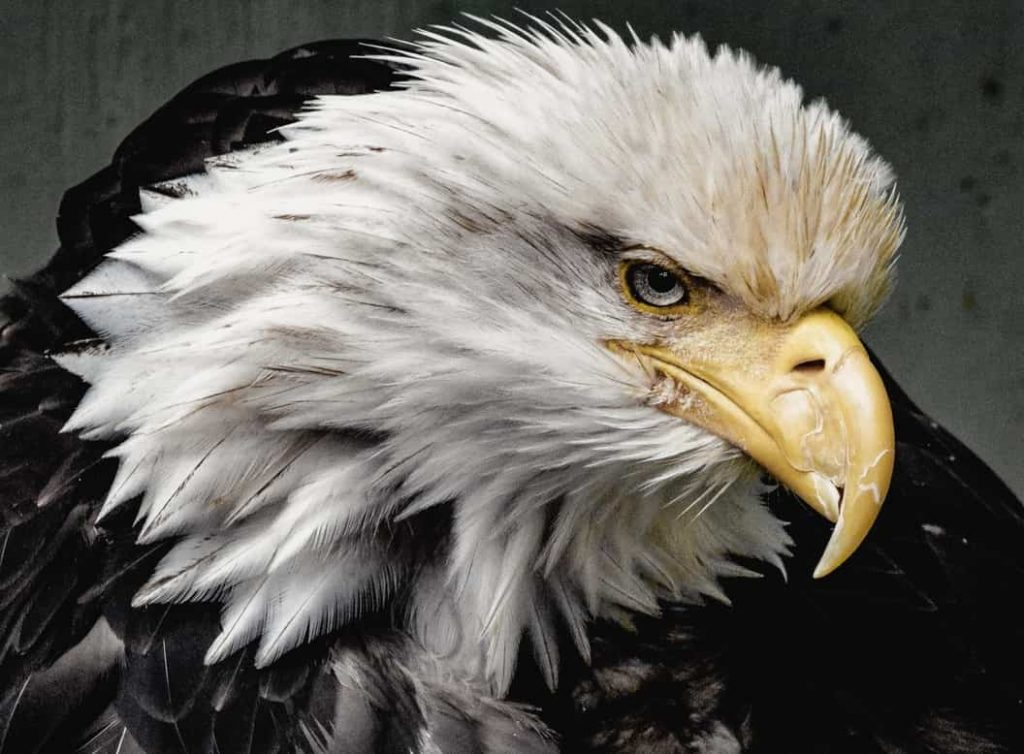
Bald Eagle is a bird of prey that has a dark brown body with a snowy feathered head and whitetail.
But we have known them ever since kindergarten. Why? Because they are the national bird symbol of the United States.
Their eyes are pale yellow, and their beaks and feet are also painted in yellow or ochre. The length of bald eagles is 34-38 inches, and they weigh around 10-14 lbs.
These eagles sit at the top of the food chain, feeding on a variety of small mammals like squirrels, raccoons and rabbits. They also scavenge on carrion, wild birds and geese. They inhabit places like wetlands, on the coasts, near lakes and rivers, and marshes. In other terms, they prefer areas near water bodies. A Bald Eagle’s average life expectancy in the wild is 20-30 years, and in captivity, it can live for up to 50 years.
Great Horned Owl
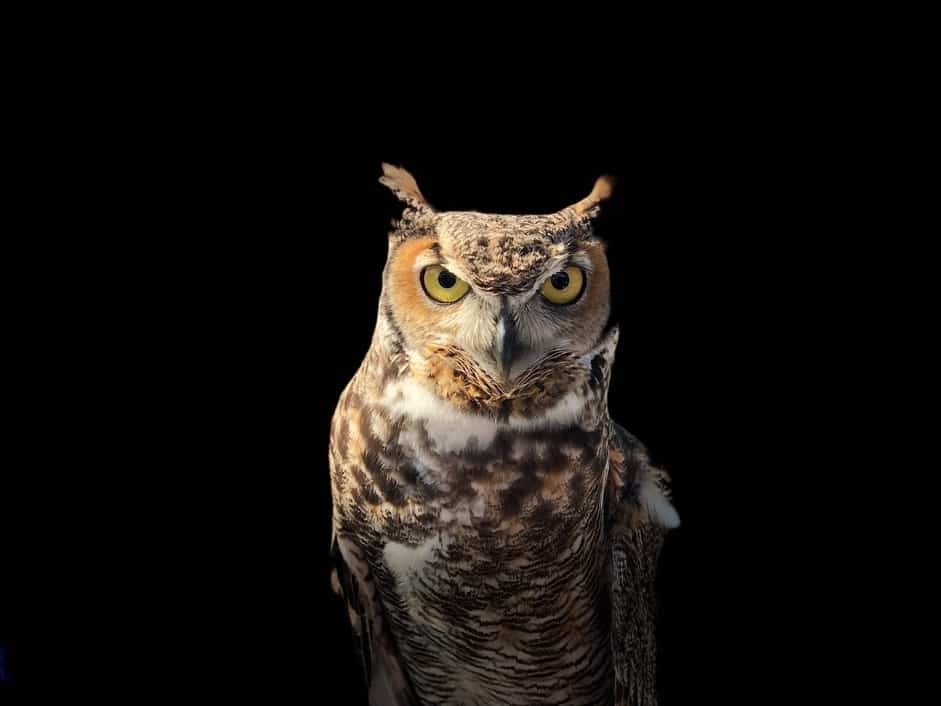
These biggies are native Americans.
Great Horned Owls have mostly originated from America. They have a broad head, curved beak and claws; they have long-feathered tufts resembling horns, or cat-like ears, their eyes are fixed in their sockets.
With a physical impediment as of such, these predators can rotate their head in more than 180 degrees in all directions to overcome their sight problem. They have an average body weight of 2.5-5.5 lbs, and their average life expectancy is 13-29 years in the wild.
Great Horned Owls feed on a variety of animals like scorpions, mice, rabbits, hawks, snakes and skunks, and sin. They inhabit areas like woodlands, tropical rainforests, mountains, saltwater marshes, deciduous and coniferous forests.
Saltwater Crocodile

Saltwater Crocodiles have identical snout which is wider than most of the other crocodiles. With a central snout and a large head, Saltwater Crocodiles are one of the deadliest saltwater predators who have been maintaining their position at the apex of the food pyramid for a very long time.
Their young ones have pale yellow coloured bodies with stripes, and the adults are darker with light tan to grey appearance. Their tail is grey coloured with dark bands, and they have a strong set of jaws with 64-68 teeth. The average weight of a Saltwater Crocodile is 882-1500 lbs, and their lifespan can be more than 65 years which is longer than any other crocodile.
Saltwater Crocodiles prey upon a wide variety of animals like snakes, turtles, birds, monkeys, buffaloes, zebras and even sharks, but they have no natural enemies.
They can live in both fresh and saltwater, hence they inhabit a number of habitats like mangrove forests, beaches, rivers, estuaries, islands and along the coastlines.
Komodo Dragon

The terrorising lizard of Indonesia, Komodos grow up to 10ft in length. The heaviest of lizards, Komodos can easily weigh 150-170 lbs. Imagine having to carry that weight around. They have a robust body with rough scales, head with a rounded snout and a muscular tail. These adult lizards are dull and have uniform brown to greyish red colouration.
Komodos inhabit hot and dry areas like dry open grassland, savanna, mangrove forest, and tropical forests at low elevations. The Komodo Dragons feed on a variety of animals like buffalo, wild boar, monkeys, deer, birds and even other young lizards. Yes, they are cannibals.
Komodo Dragons are apex predators who dominate the food chain with their venomous saliva, serrated teeth and armour-like scales.
Komodos can live as long as half a millennia.
Read: Can Komodo Dragons be Pets
Reticulated Python
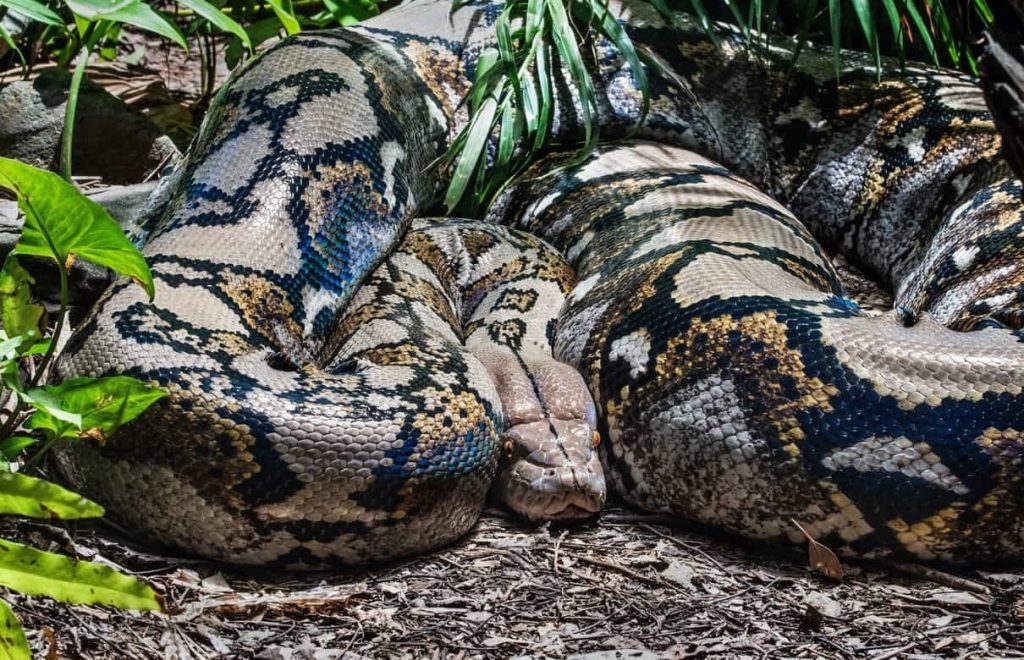
Earning the title of the ‘longest snakes in the world’, these pythons weigh around 100-350 pounds and are of 5-25 ft in length. They have complex, diamond-shaped patterns at the back of their body; in fact, they have been named so for the reticulated or netlike patterns on their body.
Along with patterns, their skin has a variety of colouration including olive green, black, white, gold, tan and yellow. These Pythons are well-known apex predators that prey on a number of animals like mammals, birds, rats, rabbits, pigs, bearcats and civets.
They inhabit regions with rivers, streams and other water bodies, like rainforests, swamps, wetlands, grassland, marshes and woodlands. Since these are exotic pets, we can guestimate that their average life expectancy in the wild is 2-20 years. However, they live for a shorter lifespan in captivity.
Tiger Shark

Tiger Sharks are one of the largest sharks in the world that go by their name for the vertical bars that cover the sides of their body. The average length that they attain is 10-13 ft, and they weigh around 850-1400 lbs.
They have a slender body, broad and flathead with a snout shorter than their mouth. In order to slice through flesh, bone and other substances, they have sharp teeth with pronounced serrations and sideways pointing tips, and their teeth are replaced with new teeth throughout their life.
They are not selective feeders; hence they prey upon a variety of marine animals like crab, lobster, squid, small sharks, rays, turtles, and marine birds.
They are apex predators but are occasionally preyed upon by a group of Killer Whales. Tiger Sharks inhabit both shallow waters and oceanic waters, but they prefer turbid coastal areas and are found in tropical and warm waters.
Their average lifespan is 27 years.
Whale Shark
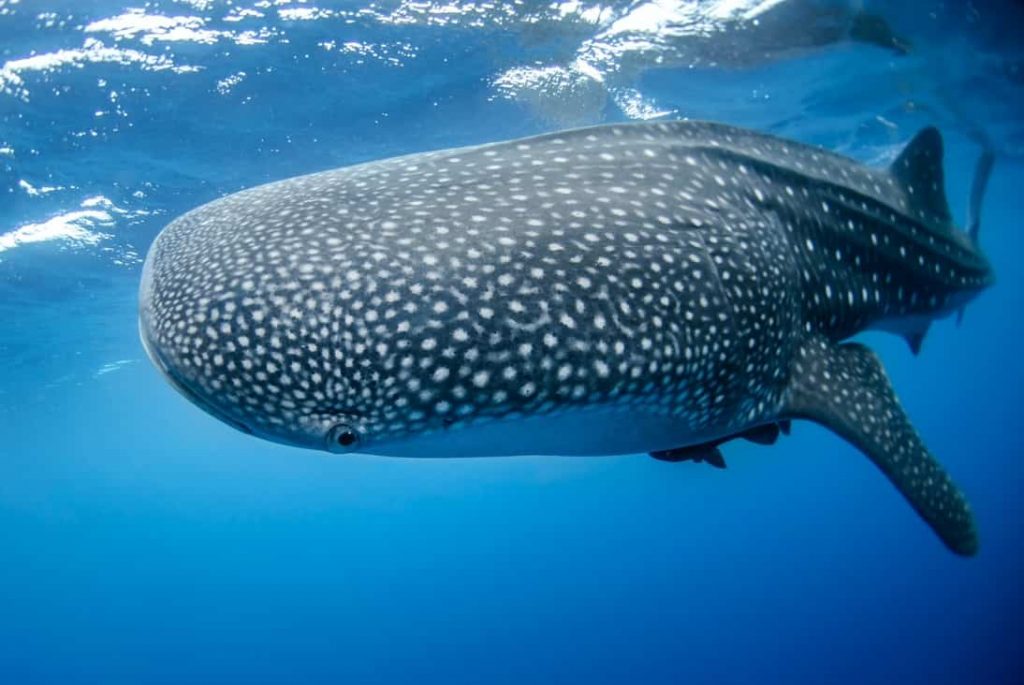
Whale Sharks can gain a length of up to 40 feet and more. This translates to the fact that they are the largest fish in the sea. Not mammals.
They have a broad and flat head with a truncated snout and an immense mouth 5.2 ft across. They have dark grey skin and white spots and stripes on their belly. They inhabit warm waters and are found in both coastal and oceanic habitats and the lagoons of coral atolls and reefs.
Whale Sharks being alpha predators are filter feeders who usually feed on small marine creatures like small shrimp, fish, krill, jellyfish, small squid and plankton.
They weigh around 50,000 pounds, and their average life expectancy is 80-130 years or more.
Killer Whale
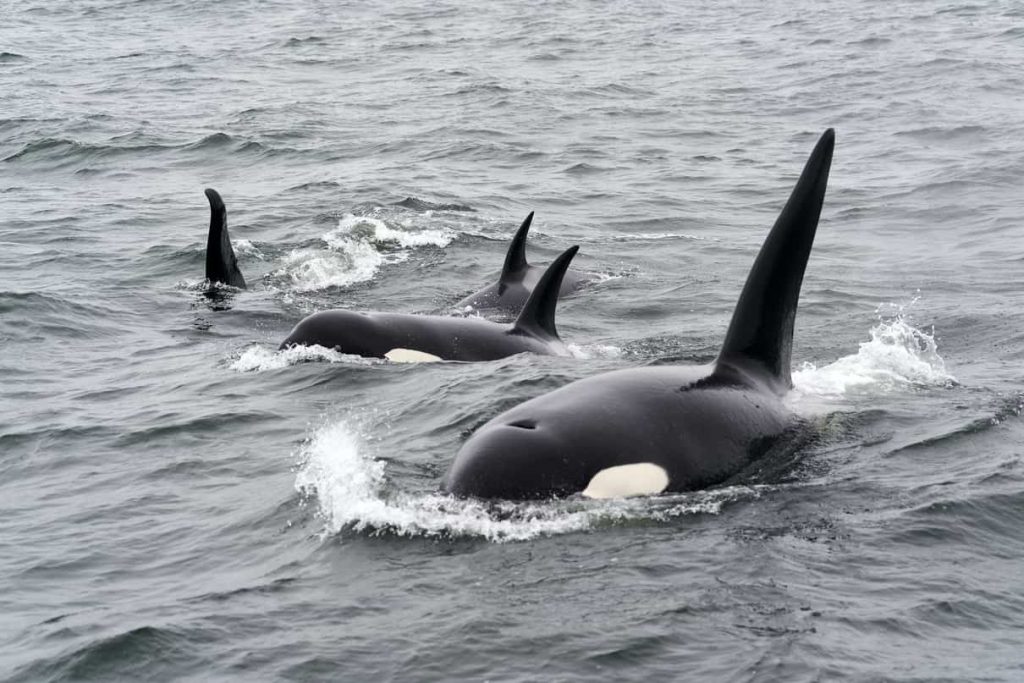
Killer Whales are also toothed whales that proudly hold the title of the largest member of the oceanic dolphin family. They have a black back with white patches on the chest, sides and behind the eye. They have sharp teeth and strong jaws, which gives them a powerful grip to hold prey in place.
With a robust body and 20-26 ft body length, Killer Whales can weigh around 8,000-12,000 lbs.
Killer Whales inhabit mainly colder water, but they are also found in tropical, subtropical waters, and they are more abundant in Coastal waters. They are apex predators sitting on top of the food chain, feeding on fish, squid, sharks, sea turtles and seals.
The average lifespan of Killer Whales is 15-38 years.
Cachalot Whale
Cachalot Whale is the largest toothed predator or apex predator. They are also known as Sperm Whales. Why? Because of the greasy, oily fluid that appears like, well, sperm.
They can be easily recognised by their square head and narrow lower jaw. They are usually dark blue-grey coloured with white patches on their belly. Cachalots feed on squid, but they also prey upon octopus, fish and megamouth sharks. Stretched in population from the Arctic to the Antarctic, they can be found in the deep waters.
Quick facts: Cachalot Whales’ average body length is 68ft, and it weighs around 90,000 pounds. The average lifespan is 60-70 years.






